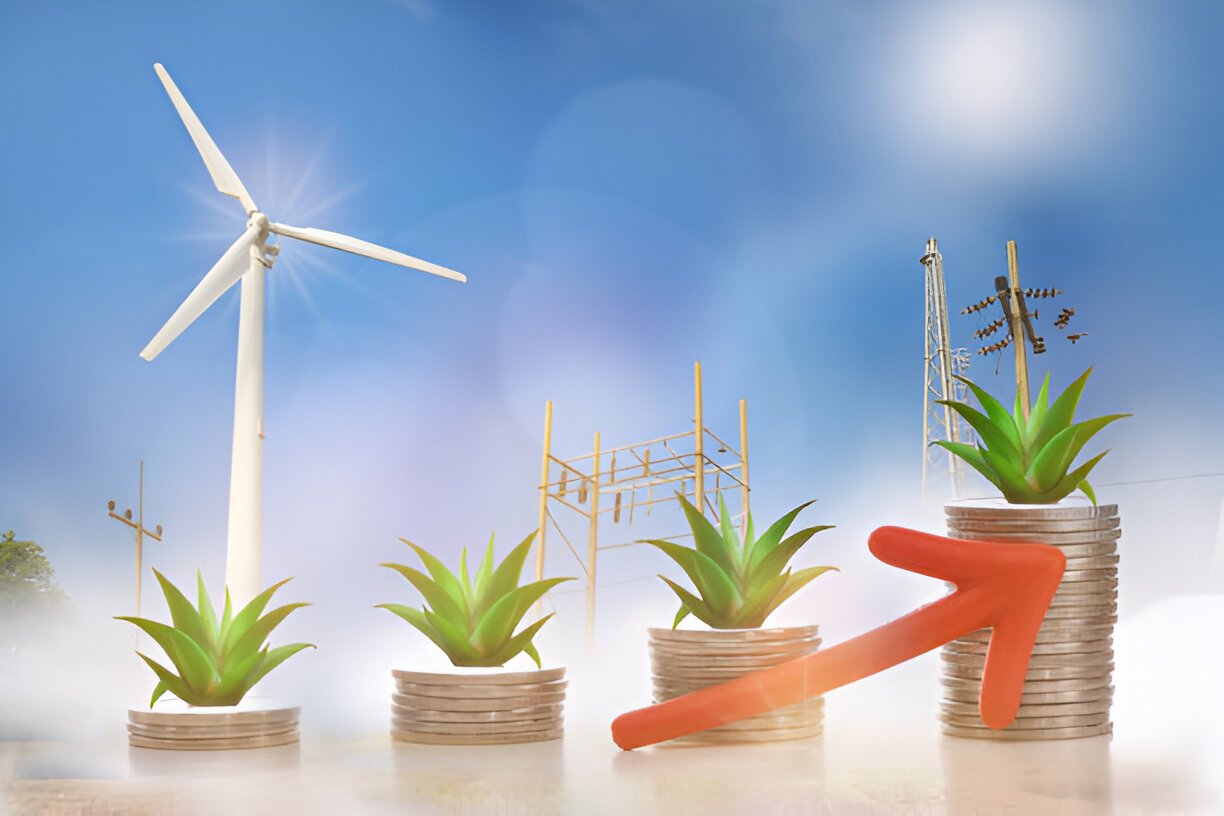Investing in clean energy has become a popular topic in recent years. As concerns about climate change and environmental sustainability have risen, investors have turned to clean energy as a way to align their financial goals with their values. One of the most accessible ways to invest in this sector is through clean energy ETFs (Exchange-Traded Funds). In this article, I will explore whether clean energy ETFs are a good investment by examining the potential benefits, risks, and the current market trends. I’ll also provide some real-world examples and comparisons to help you make an informed decision.
Table of Contents
What Are Clean Energy ETFs?
Clean energy ETFs are investment funds that track the performance of companies involved in the production, distribution, or use of renewable energy. These ETFs typically focus on sectors such as solar, wind, hydroelectric, and other sustainable energy sources. Some funds might also include companies working on energy efficiency, electric vehicles, and clean tech innovations.
The appeal of clean energy ETFs lies in their ability to provide diversified exposure to the clean energy sector without the need to pick individual stocks. They allow investors to gain access to a wide range of companies, which can reduce risk and provide a more stable return.
The Benefits of Clean Energy ETFs
1. Exposure to a Growing Market
The clean energy sector has seen significant growth in recent years, driven by the global push toward reducing carbon emissions and shifting away from fossil fuels. Governments worldwide are implementing policies that promote the use of renewable energy, and consumers are increasingly seeking eco-friendly solutions. As a result, the demand for clean energy is expected to continue growing, which could translate into higher returns for investors.
2. Diversification
One of the biggest advantages of investing in ETFs is diversification. Clean energy ETFs typically hold a basket of stocks, which means that an investor is not reliant on the performance of any single company. This reduces the risk of significant losses if one company faces challenges. Furthermore, these funds often include a mix of different types of clean energy companies, from solar panel manufacturers to wind turbine producers, providing exposure to various technologies.
3. Sustainability
For many investors, aligning their investments with their values is an important consideration. Clean energy ETFs allow individuals to invest in companies that are actively contributing to environmental sustainability. If you’re concerned about the climate crisis and want to make a positive impact, these ETFs provide a way to support the transition to a greener economy.
The Risks of Clean Energy ETFs
While clean energy ETFs offer many benefits, they are not without risks. It’s essential to understand these risks before deciding to invest.
1. Volatility
The clean energy sector is known for its volatility. The prices of clean energy stocks can fluctuate dramatically based on factors such as government policy changes, technological advancements, and market sentiment. For example, if a major government reduces its support for renewable energy, it could negatively impact the stock prices of clean energy companies. Similarly, if a new energy technology fails to deliver on its promises, the stock prices of related companies might fall.
2. Dependence on Government Policies
Many clean energy companies rely heavily on government subsidies and incentives to stay profitable. If these incentives are reduced or eliminated, it could hurt the growth prospects of companies in the sector. For example, tax credits for solar energy or electric vehicle incentives could be revoked, leading to a decline in the profitability of related companies.
3. Technological Risks
The clean energy industry is still evolving, and technological breakthroughs can significantly affect the profitability of companies. For example, a new method of generating renewable energy could disrupt the market, causing some companies to lose their competitive edge. Similarly, companies that are unable to keep up with advancements in technology could face challenges.
How to Evaluate Clean Energy ETFs
When evaluating whether a clean energy ETF is a good investment, there are several factors to consider. Below are some of the key metrics I use when assessing these funds.
1. Performance History
The past performance of an ETF is an important indicator of its potential. While past performance doesn’t guarantee future results, it can provide some insight into how well the fund has performed in different market conditions. I recommend looking at both short-term and long-term performance to get a better sense of how the fund has fared.
2. Expense Ratio
The expense ratio is the annual fee that the ETF charges for managing the fund. While clean energy ETFs typically have lower fees than actively managed funds, it’s still important to pay attention to this metric. A higher expense ratio can eat into your returns over time. I typically look for ETFs with expense ratios of less than 0.50%, although some funds may have slightly higher fees depending on their strategies.
3. Top Holdings
It’s important to look at the top holdings of a clean energy ETF to understand which companies the fund is investing in. If you’re concerned about investing in certain sectors, you can assess whether the fund includes companies that align with your values. For example, some ETFs may focus more heavily on solar energy, while others may include a broader mix of renewable energy sources like wind and hydro.
4. Dividend Yields
Some clean energy ETFs pay dividends, which can be an attractive feature for income-seeking investors. However, dividend yields in the clean energy sector can be volatile, as many companies reinvest their profits into research and development rather than paying out dividends. If dividends are important to you, make sure to check the ETF’s yield and distribution history.
Examples of Clean Energy ETFs
Below are some examples of popular clean energy ETFs and their key characteristics:
| ETF Name | Ticker | Expense Ratio | Top Holdings | 1-Year Performance | Dividend Yield |
|---|---|---|---|---|---|
| iShares Global Clean Energy ETF | ICLN | 0.42% | NextEra Energy, Enphase Energy, Plug Power | 35% | 1.2% |
| Invesco Solar ETF | TAN | 0.69% | First Solar, SolarEdge Technologies, Enphase Energy | 25% | 0% |
| SPDR S&P Kensho Clean Power ETF | CNRG | 0.30% | Enphase Energy, Brookfield Renewable Partners, Tesla | 28% | 0.7% |
From the table above, you can see that the iShares Global Clean Energy ETF (ICLN) has the lowest expense ratio at 0.42%, with a relatively strong 1-year performance of 35%. The Invesco Solar ETF (TAN) focuses exclusively on solar energy companies, which may appeal to investors who want more targeted exposure to that sector. The SPDR S&P Kensho Clean Power ETF (CNRG) has a slightly lower performance than the other two but offers a diversified approach with a focus on multiple clean energy technologies.
Calculating Potential Returns
To get a better sense of the potential returns, let’s calculate how an investment in a clean energy ETF might perform over time. Let’s say you invest $10,000 in the iShares Global Clean Energy ETF (ICLN) with a 35% annual return for the first year. Here’s how your investment would grow:
| Year | Investment Value |
|---|---|
| 0 | $10,000 |
| 1 | $13,500 |
| 2 | $18,225 |
| 3 | $24,588 |
As you can see, with a 35% return in the first year, your $10,000 investment would grow to $13,500. In the second year, at the same rate of return, your investment would grow to $18,225, and so on. This shows the power of compound growth in a clean energy ETF.
However, it’s important to note that returns in the clean energy sector can vary greatly from year to year. While 35% growth is an optimistic scenario, actual returns could be lower or higher depending on market conditions.
Conclusion: Are Clean Energy ETFs a Good Investment?
After considering the various factors, I believe that clean energy ETFs can be a good investment for the right investor. The sector offers growth potential due to the increasing demand for renewable energy and environmental sustainability. These ETFs also provide a diversified way to invest in the sector, reducing individual stock risk. However, they come with volatility and dependence on government policies, so it’s crucial to assess whether you’re comfortable with these risks.
If you’re looking for long-term growth and want to align your investments with sustainability, clean energy ETFs could be a good choice. Just make sure to evaluate the specific fund, its holdings, and performance history to ensure it fits your investment goals.





